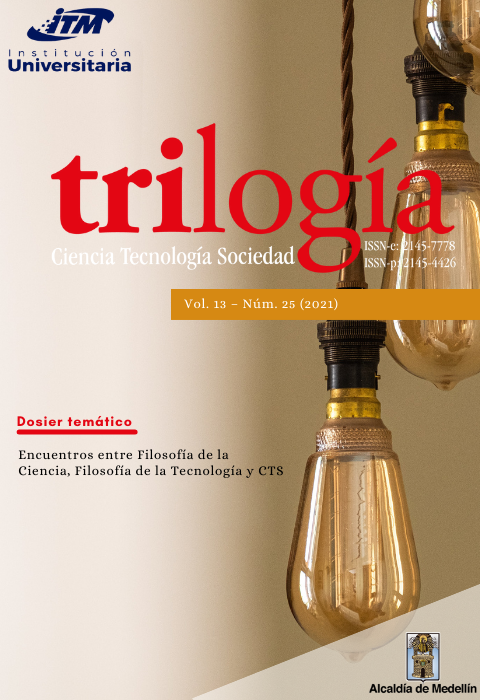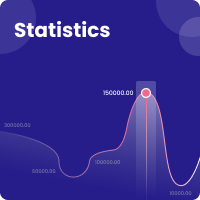Phenomenotechnique and Experimental Systems in the Understanding of Scientific Practice: The Case of the Living Cell
Abstract
This article aims at clarifying Rheinberger's conception of experimental systems in the context of Bachelard's concept of phenomenotechnique to show its usefulness in the analysis and understanding of a particular case: the emergence of the epistemic object, "living cell", in contemporary cell biology. In this case, the starting point is cell theory, cytology and biochemistry, up to the most recent developments based on live cell imaging. According to the notion of experimental system, it has been argued that it includes epistemic or scientific objects and experimental conditions, as well as junctures, hybridizations and bifurcations. Rheinberger's conception of experimental system is a finer characterization of contemporary science, involving a central element of research activity: the emergence of the scientific-epistemic object (living cell) co-generated between a representation space and a grapheme (an experimental trace that leaves signifiers) within an experimental system called living cell imaging. Finally, in the context of recent studies on science, technology and society, we also seek to show how it is possible to integrate philosophical reflections with scientific practice, as it actually happens in the laboratory, something rare in current works on philosophy of science.
References
Ackermann, R. (1989). The new experimentalism. The British Journal for the Philosophy of Science, v. 40, n. 2, 185-190. https://www.jstor.org/stable/687509
Ackermann, R. J. (2016). Data, Instruments, and Theory: A dialectical approach to understanding science. Princeton University Press.
Albarracín Teulón, A. (1983). La teoría celular: historia de un paradigma. Alianza Editorial.
Amos, W. B.; White, J. G. (2003). How the Confocal Laser Scanning Microscope entered Biological Research. Biology of the Cell, v. 95, n. 6, 335-342. https://doi.org/10.1016/s0248-4900(03)00078-9
Bachelard, G. (2004a). La formación del espíritu científico. Contribución a un psicoanálisis del conocimiento objetivo (15a. ed.). Siglo XXI editores.
Bachelard, G. (2004b). Noúmeno y microfísica. En Estudios. Amorrortu Editores.
Baker, J. R. (1952). The Cell-Theory: A Restatement, History, and Critique: Part III. The Cell as a Morphological Unit. Journal of Cell Science, v. 93, n. 22, 157-190. https://doi.org/10.1242/jcs.s3-93.22.157
Bechtel, W. (2006). Discovering cell mechanisms: The creation of modern cell biology. Cambridge University Press.
Boon, M. (2015). The Scientific Use of Technological Instruments. En S. O. Hansson (ed.), The role of technology in science: Philosophical perspectives (pp. 55-79). Springer. https://doi.org/10.1007/978-94-017-9762-7_4
Brockliss, L. W. B. (1992). The Scientific Revolution in France. En R. Porter; M. Teich (eds.), The Scientific Revolution in National Context (pp. 55-89). Cambridge University Press.
Bruhn, M. (2011). Life lines: An art history of biological research around 1800. Studies in History and Philosophy of Science Part C: Studies in History and Philosophy of Biological and Biomedical Sciences, v. 42, n. 4, 368-380. https://doi.org/10.1016/j.shpsc.2011.07.007
Buchdahl, G. (1965). A revolution in historiography of science. History of science, v. 4, n. 1, 55-69. https://doi.org/10.1177/007327536500400103
Bueno, O.; Chen, R. L.; Fagan, M. B. (eds.). (2018). Individuation, process, and scientific practices. Oxford University Press.
Cairns, J.; Stent, G. S.; Watson, J. D. (eds.). (2007). Phage and the Origins of Molecular Biology. Cold Springs Harbor Laboratory Press.
Cardona-Gomez, J. C.; Ariza-Jimenez, L. F., Gallego-Gomez, J. C. (2016). A Proposal for a Machine Learning Classifier for Viral Infection in Living Cells Based on Mitochondrial Distribution. En S. Najman (ed.), Cell Biology-New Insights. https://doi.org/10.5772/61293
Chimisso, C. (2008). From phenomenology to phenomenotechnique: the role of early twentieth-century physics in Gaston Bachelard’s philosophy. Studies in History and Philosophy of Science Part A, v. 39, n. 3, 384-392. https://doi.org/10.1016/j.shpsa.2008.06.010
Clarke, A. E.; Fujimura, J. H. (eds.). (2014). The Right Tools for the Job. At Work in Twentieth-Century Life Sciences. Princeton University Press.
Coopmans, C.; Vertesi, J.; Lynch, M. E.; Woolgar, S. (eds.). (2014). Representation in Scientific Practice Revisited. The MIT Press.
Coutu, D. L.; Schroeder, T. (2013). Probing cellular processes by long-term live imaging – historic problems and current solutions. Journal of Cell Science, v. 126, n. 17, 3805-3815. https://doi.org/10.1242/jcs.118349
Daston, L.; Galison, P. (2007). Objectivity. Zone Books.
Davenport, D.; Nicol, J. A. C. (1955). Luminescence in hydromedusae. Proceedings of the Royal Society B: Biological Sciences, v. 144, n. 916, 399-411. https://doi.org/10.1098/rspb.1955.0066
Deleuze, G. (2002). Diferencia y repetición. Amorrortu Editores.
Derrida, J. (1978). De la gramatología. Siglo XXI editores.
Fleck, L. (1986). La génesis y el desarrollo de un hecho científico. Introducción a la teoría del estilo de pensamiento y del colectivo de pensamiento. Alianza Editorial.
Gómez Mata, M. J. (2013). Fenomenotécnica: Bachelard y el giro práctico en la Filosofía de la Ciencia. ArtefaCToS. Revista de estudios sobre la ciencia y la tecnología, v. 6, n. 1, 65-80. https://revistas.usal.es/index.php/artefactos/article/view/15587
Goss, C. M. (1937). The Historical Background of Schwann's Cell Theory. The Yale Journal of Biology and Medicine, v. 10, n. 2, 125-144.
Guay, A.; Pradeu, T. (eds.). (2016). Individuals Across the Sciences. Oxford University Press.
Hackett, E. J. (2005). Essential Tensions: Identity, Control, and Risk in Research. Social Studies of Science, v. 35, n. 5, 787-826. https://doi.org/10.1177/0306312705056045
Hacking, I. (1983). Representing and Intervening: Introductory Topics in the Philosophy of Natural Science. Cambridge University Press. https://doi.org/10.1017/CBO9780511814563
Harris, H. (2000). The Birth of the Cell. Yale University Press.
Haseloff, J. (1998). GFP variants for multispectral imaging of living cells. Methods in Cell Biology, v. 58, 139-151. https://doi.org/10.1016/S0091-679X(08)61953-6
Hernández-Cuellar, C. E.; Castrillón-Martínez, E.; Gallego-Gómez, J. C. (2020). Descubrimiento de fármacos basado en imagenología de células vivas. Revista Colombiana de Ciencias Químico-Farmacéuticas, v. 49, n. 1, 114-136. https://doi.org/10.15446/rcciquifa.v49n1.87026
Hodgkin, J. (2001). Hershey and his heaven. Nature Cell Biology, v. 3, n. 3. https://doi.org/10.1038/35060155
Jacob, F. (1988). The Statue Within: An Autobiography. Basic Books.
Kittler, F. A. (1992). Discourse Networks, 1800/1900. Stanford University Press.
Knorr Cetina, K. (1999). Epistemic Cultures: How the Sciences Make Knowledge. Harvard University Press.
Kraft, A.; Rubin, B. P. (2016). Changing cells: An analysis of the concept of plasticity in the context of cellular differentiation. BioSocieties, v. 11, n. 4, 497-525. https://doi.org/10.1057/s41292-016-0027-y
Landecker, H. (2006). Microcinematography and the History of Science and Film. Isis, v. 97, n. 1, 121-132. https://doi.org/10.1086/501105
Landecker, H. (2009). Seeing things: from microcinematography to live cell imaging. Nature methods, v. 6, n. 10, 707-709. https://doi.org/10.1038/nmeth1009-707
Landecker, H. (2011). Creeping, Drinking, Dying: The Cinematic Portal and the Microscopic World of the Twentieth-Century Cell. Science in Context, v. 24, n. 3, 381-416. https://doi.org/10.1017/S0269889711000160
Landecker, H. (2012). The Life of Movement: From Microcinematography to Live-Cell Imaging. Journal of Visual Culture, v. 11, n. 3, 378-399. https://doi.org/10.1177/1470412912455622
Latour, B. (2011). Drawing things together. En M. Dodge; R. Kitchin; C. Perkins (eds.), The map reader: Theories of mapping practice and cartographic representation (pp. 65-72). https://doi.org/10.1002/9780470979587
Latour, B.; Woolgar, S. (1986). Laboratory Life: The Construction of Scientific Facts. Princeton University Press. https://doi.org/10.2307/j.ctt32bbxc
Lenoir, T. (2010). Epistemology Historicized. Making Epistemic Things. En H. J. Rheinberger, An Epistemology of the Concrete: Twentieth-Century Histories of Life (pp. xi-xx). Duke University Press.
Love, A. C. (2018). Individuation, Individuality, and Experimental Practice in Developmental Biology. En O. Bueno; R. L. Chen; M. B. Fagan (eds.), Individuation, Process, and Scientific Practices (pp. 165-191). https://doi.org/10.1093/oso/9780190636814.003.0008
Lynch, M.; Woolgar, S. (eds.). (1990). Representation in Scientific Practice. MIT Press.
Martínez, S. F.; Huang, X. (2015). Hacia una filosofía de la ciencia centrada en prácticas. Instituto de Investigaciones Filosóficas.
Mazzarello, P. (1999). A unifying concept: the history of cell theory. Nature Cell Biology, v. 1, n. 1, E13-E15. https://doi.org/10.1038/8964
Morange, M. (1998). A History of Molecular Biology. Harvard Univeristy Press.
Mullins, N. C. (1972). The development of a scientific specialty: The phage group and the origins of molecular biology. Minerva, v. 10, n. 1, 51-82. https://doi.org/10.1007/BF01881390
Papkovsky, D. (ed.). (2010). Live Cell Imaging: Methods and Protocols. Humana Press.
Pickering, A. (1995). The Mangle of Practice: Time, Agency, and Science. University of Chicago Press.
Renz, M. (2013). Fluorescence microscopy—A historical and technical perspective. Cytometry Part A, v. 8, n. 9, 767-779. https://doi.org/10.1002/cyto.a.22295
Rheinberger, H. J. (1994). Experimental Systems: Historiality, Narration, and Deconstruction. Science in Context, v. 7, n. 1, 65-81. https://doi.org/10.1017/S0269889700001599
Rheinberger, H. J. (1995a). From Experimental Systems to Cultures of Experimentation. En G. Wolters; J. G. Lennox (eds.), Concepts, Theories, and Rationality in the Biological Sciences (pp. 107-122). University of Pittsburgh Press.
Rheinberger, H. J. (1995b). From microsomes to ribosomes: “Strategies” of “representation”. Journal of the History of Biology, v. 28, n. 1, 49-89. https://doi.org/10.1007/BF01061246
Rheinberger, H. J. (1997a). Toward a History of Epistemic Things: Synthesizing Proteins in the Test Tube. Stanford University Press.
Rheinberger, H. J. (1997b). Experimental Complexity in Biology: Some Epistemological and Historical Remarks. Philosophy of Science, v. 64, S245-S254. https://doi.org/10.1086/392604
Rheinberger, H. J. (2005). Gaston Bachelard and the notion of “phenomenotechnique”. Perspectives on Science, v. 13, n. 3, 313-328. https://doi.org/10.1162/106361405774288026 9
Rheinberger, H. (2007). Preparaciones: Representaciones de sí mismas. En E. Suárez Díaz (comp.), Variedad infinita. Ciencia y representación. Un enfoque histórico y filosófico (pp. 319-334). Limusa.
Rheinberger, H. J. (2010). An Epistemology of the Concrete: Twentieth-Century Histories of Life. Duke University Press.
Rheinberger, H. J. (2011). Consistency from the perspective of an experimental systems approach to the sciences and their epistemic objects. Manuscrito, v. 34, n. 1, 307-321. https://doi.org/10.1590/S0100-60452011000100014
Schiller, J. (1967). Claude Bernard and vivisection. Journal of the History of Medicine and Allied Sciences, v. 22, n. 3, 246-260.
Schrödinger, E. (2012). What is Life?: With Mind and Matter and Autobiographical Sketches. Cambridge University Press.
Scott, M.; Gunderson, C. W.; Mateescu, E. M.; Zhang, Z.; Hwa, T. (2010). Interdependence of Cell Growth and Gene Expression: Origins and Consequences. Science, v. 330, n. 6007, 1099-1102. https://doi.org/10.1126/science.1192588
Shapin, S.; Schaffer, S. (2005). El Leviathan y la bomba de vacío: Hobbes, Boyle y la vida experimental. Universidad Nacional de Quilmes.
Shimomura, O.; Johnson, F. H.; Saiga, Y. (1962). Extraction, Purification and Properties of Aequorin, a Bioluminescent Protein from the Luminous Hydromedusan, Aequorea. Journal of Cellular and Comparative Physiology, v. 59, n. 3, 223-239. https://doi.org/10.1002/jcp.1030590302
Steinle, F. (2002). Experiments in History and Philosophy of Science. Perspectives on Science, v. 10, n. 4, 408-432. https://doi.org/10.1162/106361402322288048
Steinle, F. (2006). Concept formation and the limits of justification:“Discovering” the two electricities. En J. Schickore; F. Steinle (eds.), Revisiting discovery and justification (pp. 183-195). Springer. https://doi.org/10.1007/1-4020-4251-5_11
Stent, G. S.; Weisblat, D. A. (1985). Cell Lineage in the Development of Invertebrate Nervous Systems. Annual Review of Neuroscience, v. 8, 45-70. https://doi.org/10.1146/annurev.ne.08.030185.000401
Stern, C. D.; Fraser, S. E. (2001). Tracing the lineage of tracing cell lineages. Nature Cell Biology, v. 3, n. 9, E216-E218. https://doi.org/10.1038/ncb0901-e216
Torretti, R. (2012). Fenomenotecnia y conceptualización en la epistemología de Gaston Bachelard. Theoria. Revista de Teoría, Historia y Fundamentos de la Ciencia, v. 27, n. 1, 97-114.
Tsien, R. Y. (2003). Imagining imaging's future. Nature reviews. Molecular cell biology, SS16-21.
Weber, M. (2004). Philosophy of Experimental Biology. Cambridge University Press. https://doi.org/10.1017/CBO9780511498596
Downloads
Copyright (c) 2021 Instituto Tecnológico Metropolitano

This work is licensed under a Creative Commons Attribution-NonCommercial-ShareAlike 4.0 International License.
Altmetric
Funding data
-
Departamento Administrativo de Ciencia, Tecnología e Innovación (COLCIENCIAS)
Grant numbers 111584466951










